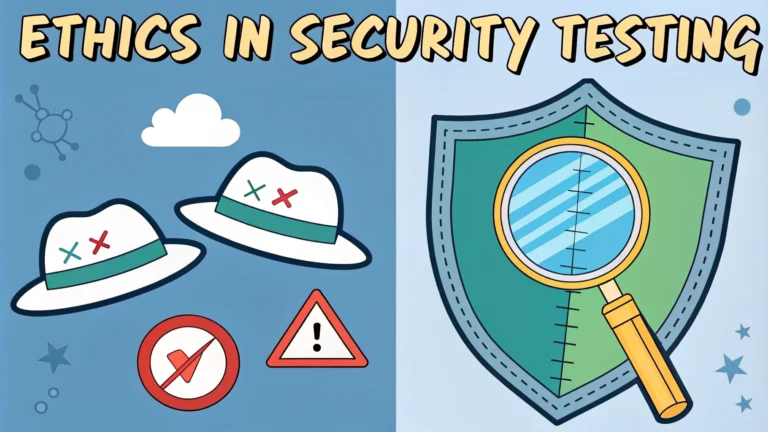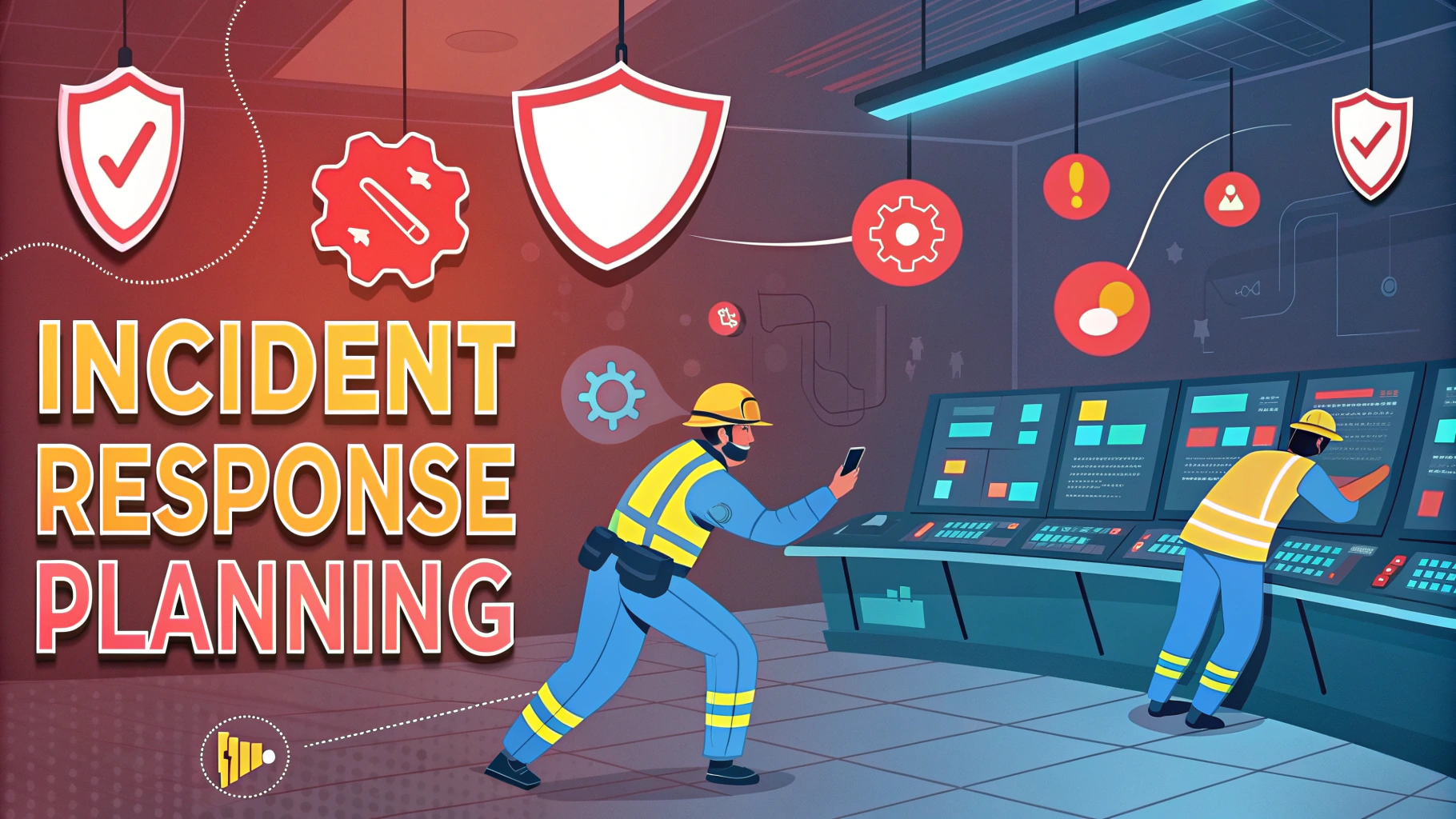Security testing requires strong ethical principles to protect organizations, individuals, and data while uncovering vulnerabilities.
Core Ethical Principles for Penetration Testing
- Written Permission – Always obtain explicit authorization before testing
- Scope Compliance – Stay within defined testing boundaries
- Data Protection – Handle sensitive information securely
- Documentation – Record all testing activities thoroughly
- Non-Disruption – Avoid service interruptions where possible
Legal Requirements
Testing without proper authorization can result in criminal charges under computer misuse laws.
Common legal frameworks affecting penetration testing include:
- Computer Fraud and Abuse Act (CFAA)
- General Data Protection Regulation (GDPR)
- State-specific cybersecurity laws
- Industry-specific regulations (HIPAA, PCI-DSS)
Required Documentation
- Scope Document – Detailed description of systems to be tested
- Rules of Engagement – Testing boundaries and restrictions
- Authorization Letter – Written permission from system owner
- Non-Disclosure Agreement – Confidentiality terms
Best Practices
- Test during approved time windows
- Report critical vulnerabilities immediately
- Maintain detailed activity logs
- Use only approved testing tools
- Secure all testing data and results
Common Ethical Issues
Address these potential concerns before testing:
- Access to personal/sensitive data
- Service disruption risks
- Third-party system impacts
- Cloud infrastructure considerations
Professional Certifications
These certifications include ethical training:
- Certified Ethical Hacker (CEH)
- GIAC Penetration Tester (GPEN)
- Offensive Security Certified Professional (OSCP)
Contact Information
For ethical guidance, contact these organizations:
- EC-Council: www.eccouncil.org
- SANS Institute: www.sans.org
- ISC²: www.isc2.org
Remember: ethical behavior in security testing protects both the tester and the client while maintaining professional standards.
Risk Management
Effective risk management is crucial for ethical penetration testing to minimize potential harm while maximizing security benefits.
- Conduct thorough pre-test risk assessments
- Implement incident response procedures
- Maintain backup plans for critical systems
- Monitor real-time system impacts
Testing Methodology
Pre-Engagement
- Verify all authorizations
- Review scope documentation
- Establish emergency contacts
- Configure testing environment
Post-Engagement
- Clean up testing artifacts
- Document all findings
- Verify system restoration
- Submit detailed reports
Incident Response Protocol
Follow these steps when incidents occur during testing:
- Immediately stop testing activities
- Notify designated contacts
- Document the incident
- Support recovery efforts
- Review and adjust procedures
Conclusion
Ethical penetration testing requires a balanced approach between security assessment and system protection. Success depends on:
- Strict adherence to legal requirements
- Comprehensive documentation
- Professional conduct throughout testing
- Proper risk management
- Continuous learning and certification
Organizations must prioritize ethical considerations in security testing to maintain trust, protect assets, and ensure compliance with regulatory requirements.
FAQs
- What are the key ethical principles that guide security testing?
Ethical security testing follows principles of explicit permission, scope adherence, data protection, confidentiality, responsible disclosure, and avoiding damage to systems or data. - Do I need written authorization before conducting a penetration test?
Yes, written authorization is mandatory before conducting any security testing. Testing without explicit permission is illegal and can result in criminal charges. - What’s the difference between black hat, white hat, and grey hat testing?
White hat testing is legal testing with permission, black hat is malicious unauthorized hacking, and grey hat operates in ethical gray areas without explicit permission but often with good intentions. - How should sensitive data discovered during testing be handled?
Sensitive data must be encrypted, handled according to agreed terms, reported only to authorized personnel, and securely destroyed after testing completion. - What are the legal implications of exceeding the scope of a penetration test?
Exceeding scope can result in criminal charges, civil lawsuits, breach of contract claims, and violation of laws like the Computer Fraud and Abuse Act. - How should vulnerabilities discovered during testing be disclosed?
Vulnerabilities should be reported confidentially to authorized contacts following agreed-upon disclosure procedures, with sufficient time given for remediation before any public disclosure. - What precautions should be taken to avoid system damage during testing?
Testers should backup data, avoid denial-of-service attacks, test during approved windows, use non-destructive testing methods, and have rollback procedures ready. - When should a penetration tester stop or pause testing?
Testing should stop if critical systems are impacted, unauthorized data is accessed, scope is exceeded, legal issues arise, or when asked by the client. - What documentation should be maintained during ethical security testing?
Documentation should include authorization papers, scope definitions, testing methodologies, findings, timestamps of activities, and communication records with stakeholders. - How should conflicts of interest be handled in security testing?
Testers should disclose any conflicts of interest, avoid testing systems where they have personal interests, and maintain professional independence.








